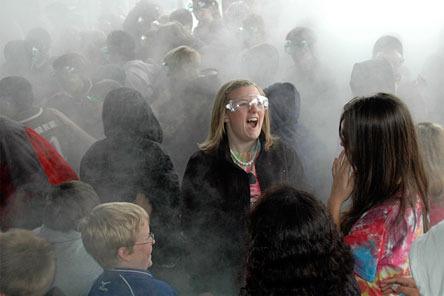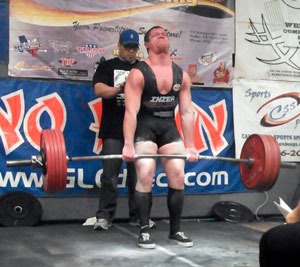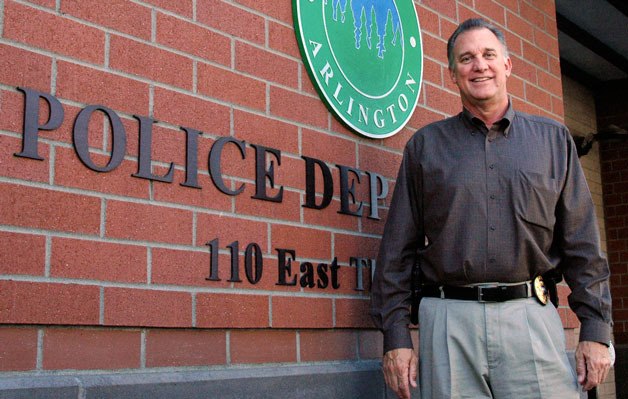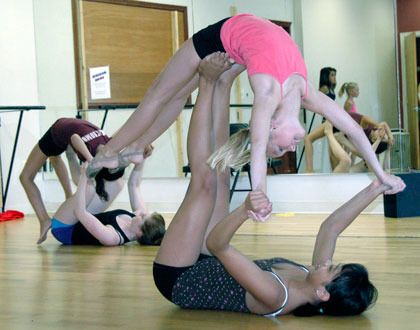ARLINGTON — Exciting usually isn’t a word that best describes chemistry experiments.
But a group of Arlington High School students have done their best to change that.
About 40 high-schoolers enrolled in Deanna Vaughan’s advanced placement chemistry courses recently combined their efforts to teach fifth-graders at Eagle Creek and Presidents elementary schools about the physical and chemical changes of elements.
Using a combination of dry ice, boiling water, balloons and other objects, the older students’ presentations culminated in experiments so loud that the city fire department and neighbors were tipped off in advance.
“We came in here to boost their knowledge and give them an idea of what high school chemistry is all about,” said AHS junior Jake Hughes.
Students from the high school held their first chemistry class at Eagle Creek on Friday, May 21. City and school officials, as well as the media and neighbors, were told that there would be a loud noise coming from the school.
That noise was the sound of a burning Popsicle stick igniting with a helium-filled balloon in the play field outside of the school.
On Wednesday, May 26, the high school students treated Presidents Elementary fifth-graders to the same experiment in the school’s covered play area due to rainy weather.
“In here, the boom was a lot louder,” said junior Melissa Webb.
While the explosion was arguably the most memorable experiment conducted by the students, the high-schoolers broke up and gave individual classes of younger students an hour-long rundown on physical and chemical changes of elements beforehand.
In fifth-grade teacher Danielle Osting’s classroom, about 10 AHS students began their education portion of the day with a brief explanation of atoms, elements and their role in chemical and physical changes.
High school juniors Lindsey Bullene and Erica Manzano dropped dry ice into various liquids and children watched as those liquids began to change colors.
“We’re creating an acid — that’s why it turns colors,” Manzano said.
Later, hydrogen peroxide was combined with a solution of soap and dropped into a hollowed-out watermelon to demonstrate decomposition.
“Jack” the watermelon, who had a face carved into him like a jack-o-lantern, filled with a gooey, foam-like substance, much to the delight of Osting’s students.
“It looks like he’s melting,” one student yelled after Jack had been removed from his foamy base.
Vaughan said that individual students decided what experiments they would show during class based on state standards for fifth-grade science students.
The students even used a fifth-grade science book to see how they think, she said.
Vaughan said the idea behind having the AP students teach a class came from the high school’s head of the science program, physics teacher Nathan Davis.
“He thought it would be a really neat idea to do this after (the students) took their AP test,” Vaughan said, referring to an exam high-school students must take at the end of their chemistry curriculum. “This was just an awesome idea.”
After the classroom experiments, Osting said four students who presented in her classroom May 26 had been in her class when they were younger.
“I can’t begin to tell you how proud I am of our students and what they’re doing,” Osting said.







